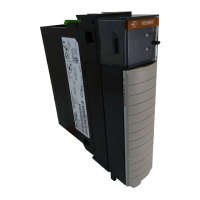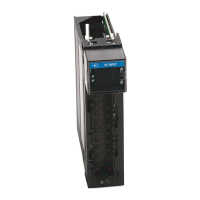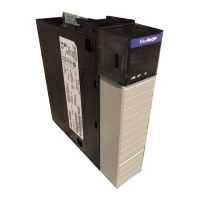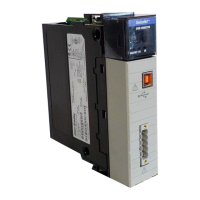Rockwell Automation Publication MOTION-UM002E-EN-P - June 2016 83
Configure an Articulated Independent Robot Chapter 4
Change the Robot Arm Solution
You can switch the robot from a left-arm solution to a right-arm solution or
vice versa. This is done automatically when a joint move is programmed forcing
a left/right change to occur. After the change is performed, the robot stays in
the new arm solution when Cartesian moves are made. The robot arm solution
changes again (if required) when another joint move is made.
Example: Suppose, you want to move the robot from position A (x1,y1) to
position B (X
2
,Y
2
) (see the next figure). At position A, the system is in a left
arm solution. Programming a Cartesian move from A (X
1
,Y
1
) to B (X
2
,Y
2
)
means that the system moves along the straight line (see the illustration) from
A to B while maintaining a left arm solution. If you want to be at position B in
a right-arm solution, you must make a joint move in J1 from Θ
to Θ
and a
joint move in J2 from α
to α
2
.
Plan for Singularity
A singularity occurs when an infinite number of joint positions (mathematical
solutions) exist for a given Cartesian position. The Cartesian position of a
singularity is dependent on the type of the robot geometry and the size of the
link lengths for the robot. Not all robot geometries have singularity positions.
For example, singularities for an Articulated Independent robot occur when:
• the robot manipulator folds its arm back onto itself and the Cartesian
position is at the origin.
• the robot is fully stretched at or very near the boundary of its workspace.
An error condition is generated when a singularity position is reached.
ATTENTION: Avoid programming your robot towards a singularity position
when programming in Cartesian mode. The velocity of the robot increases
very rapidly as it approaches a singularity position and can result in injury or
death to personnel.
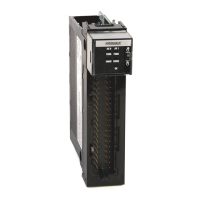
